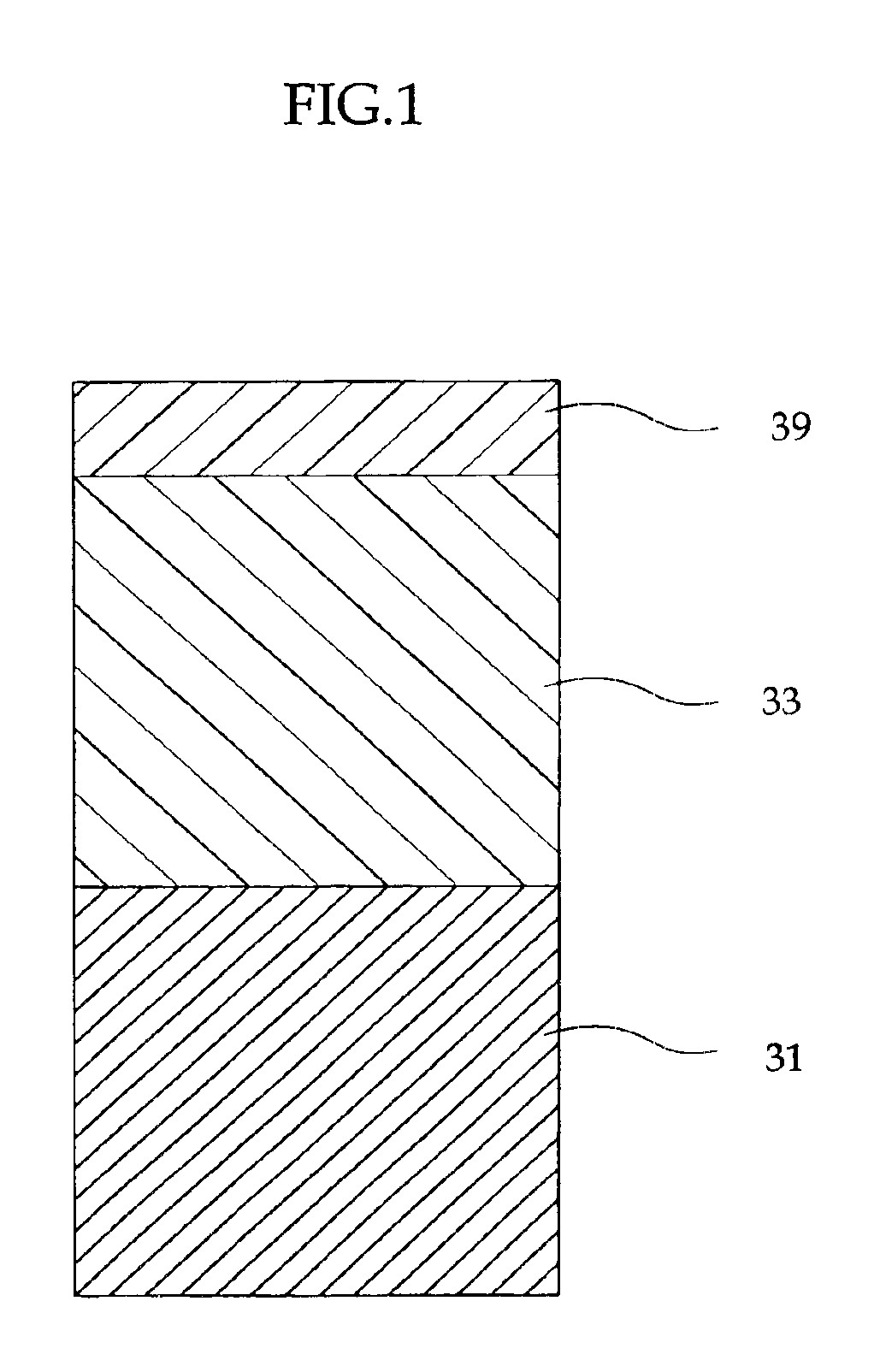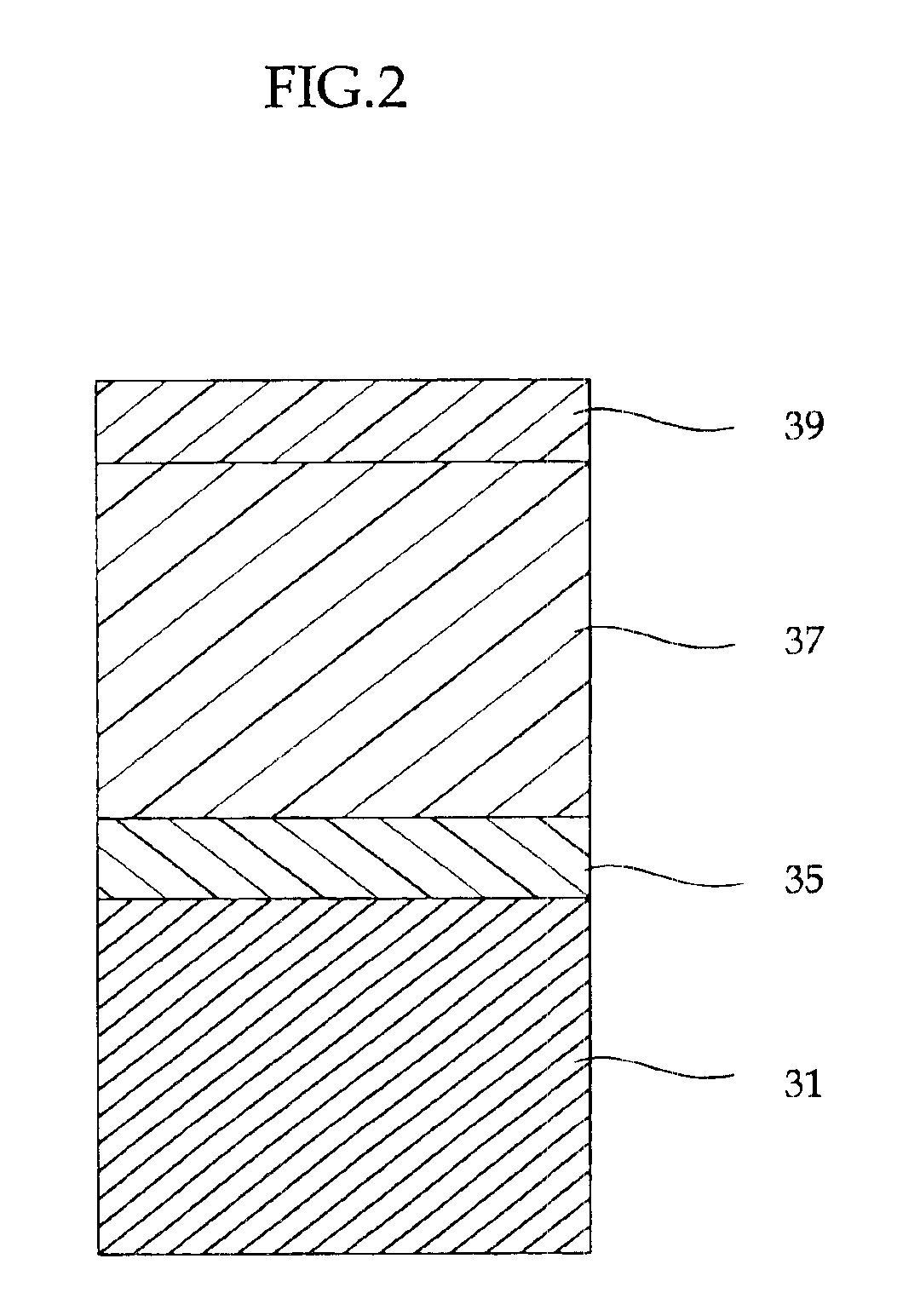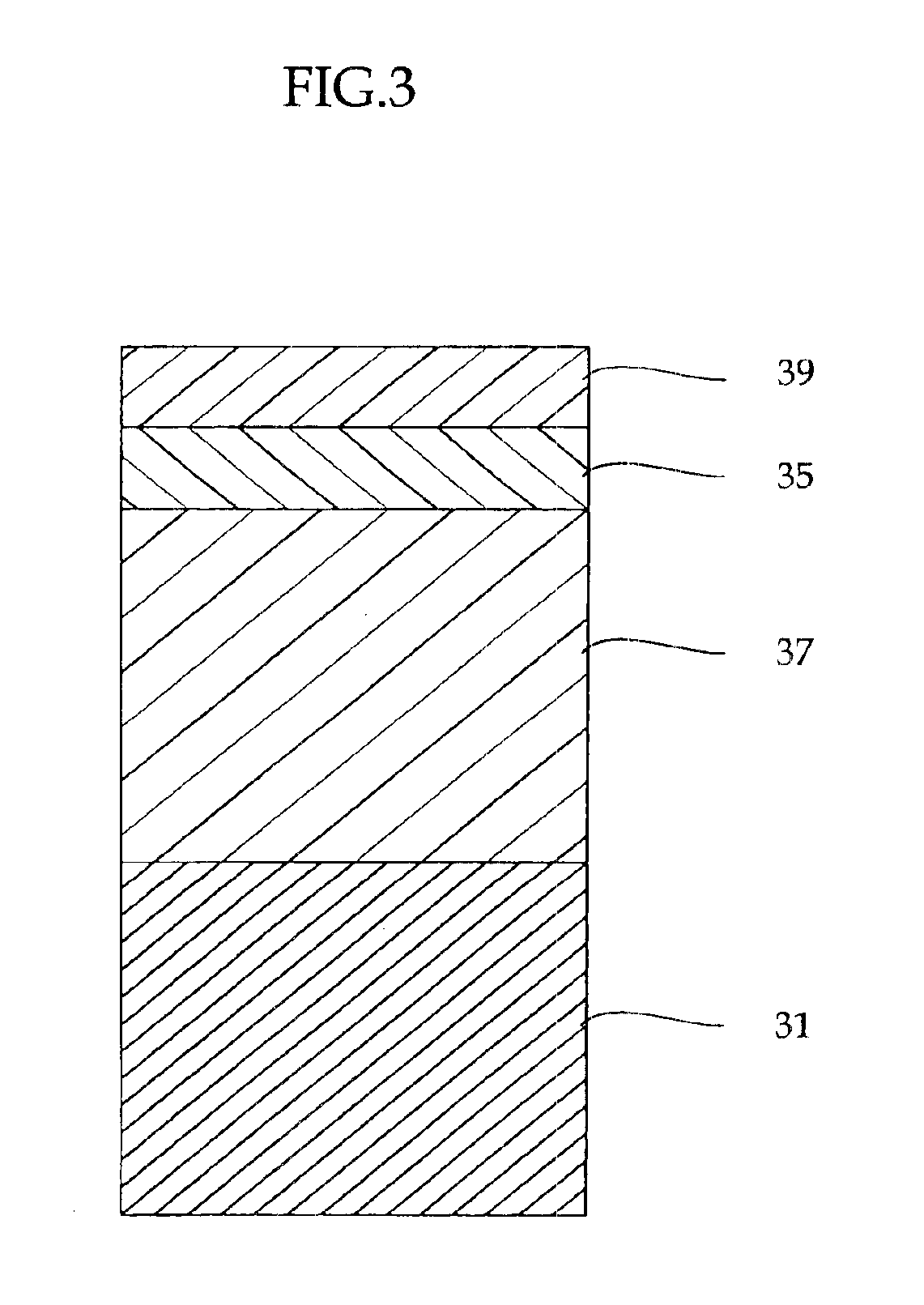Electrophotographic photoconductor, electrophotographic apparatus and process cartridge
a photoconductor and electrophotography technology, applied in the direction of electrographic process apparatus, instruments, corona discharge, etc., can solve the problems of incompatibility with higher durability, decrease of optical transmittance and image deterioration, and strength decline, so as to improve wear resistance, reduce foreign matter adhesion, and improve image quality
- Summary
- Abstract
- Description
- Claims
- Application Information
AI Technical Summary
Benefits of technology
Problems solved by technology
Method used
Image
Examples
example 1
[0204]An underlayer of approximately 3.5 μm, a charge-generating layer of approximately 0.2 μm and a charge transport layer of approximately 20 μm were formed by impregnation coating method, in which an underlayer coating solution, a charge-generating layer coating solution and a charge transport layer coating solution having the following compositions, were sequentially applied on an aluminium drum of diameter 30 mm. A protective layer of approximately 5.0 μm was then formed by spray coating method, in which a protective layer coating solution was prepared as described below, and heated in an oven at 150° C. for 30 minutes so as to manufacture a photoconductor 1.
[Underlayer Coating Solution]
[0205]
Alkyde resin6parts(Bekozole 1307-60-EL, DAINIPPON INK ANDCHEMICALS, INCORPORATED)Melamine resin4parts(Super Bekamine G-821-60, DAINIPPON INK ANDCHEMICALS, INCORPORATED)Titanium oxide40partsMethyl ethyl ketone50parts[Charge-generating layer coating solution]Bis-azo pigment expressed by Form...
example 2
[0207]A photoconductor 2 was manufactured in the same way as in Example 1, except that the protective layer coating solution of Example 1 was changed to the following protective layer coating solution.
[Protective Layer Coating Solution]
[0208]6 parts of acryl-modified polyorganosiloxane (CHALINE R-170S, Nissin Chemical Industry Co., Ltd.), 15 parts of styrene-MMA (methyl methacrylate)-2-HEMA (hydroxyethyl methacrylate) copolymer (20% by weight 2-ethoxyethyl acetate / methylisobutyl ketone solution), 3 parts of a polymer having a charge transport function, expressed by Formula (ii), 30 parts of cellosolve acetate and 10 parts of methyl isobutyl ketone were mixed and dispersed by a ball mill for 120 hours. 40 parts of a mixed solution of hexamethylene diisocyanate-trimethylolpropane adduct, acetone and ethyl acetate, was then added, and stirred to prepare a coating solution.
example 3
[0209]A photoconductor 3 was manufactured in the same way as in Example 1, except that the protective layer coating solution of Example 1 was changed to the following protective layer coating solution.
[Protective Layer Coating Solution]
[0210]3 parts of acryl-modified polyorganosiloxane (CHALINE R-170S, Nissin Chemical Industry Co., Ltd.), 15 parts of MMA (methyl methacrylate)-BMA (butyl methacrylate)-HEMA (hydroxyethyl methacrylate) copolymer (50% by weight toluene / butyl acetate solution), 2 parts of α-alumina (Sumi Corundum AA-03, average first-order particle diameter: 0.3 μm, Sumitomo Chemical Industries), 0.05 parts of a polycarbonate compound (BYK-P104, 50% by weight xylene solution, BYK-Chemie Japan K.K.) and 20 parts of cyclohexanone were mixed and dispersed by a ball mill for 50 hours. A mixed solution of 5 parts benzoguanamine resin (80% by weight butyl cellosolve solution), 0.05 parts of an aromatic sulfonic acid (40% by weight isopropyl alcohol solution), 7 parts of a low ...
PUM
| Property | Measurement | Unit |
|---|---|---|
| order particle diameter | aaaaa | aaaaa |
| first-order particle diameter | aaaaa | aaaaa |
| particle diameter | aaaaa | aaaaa |
Abstract
Description
Claims
Application Information
 Login to View More
Login to View More - R&D
- Intellectual Property
- Life Sciences
- Materials
- Tech Scout
- Unparalleled Data Quality
- Higher Quality Content
- 60% Fewer Hallucinations
Browse by: Latest US Patents, China's latest patents, Technical Efficacy Thesaurus, Application Domain, Technology Topic, Popular Technical Reports.
© 2025 PatSnap. All rights reserved.Legal|Privacy policy|Modern Slavery Act Transparency Statement|Sitemap|About US| Contact US: help@patsnap.com



